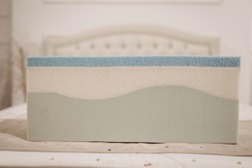Sleep is a topic discussed more and more these days as so many of us continually run on too little rest each week. We open ourselves to more illnesses, stress, and other health problems, along with lost productivity. That’s where naps can come in handy, though. Napping is something we can all learn how to do and use effectively.
Don’t Nap Too Late
It’s crucial not to nap too close to your bedtime. If you do, you’ll find it too hard to get to sleep at your standard rest time, and then your whole sleep cycle will get out of routine. Try to keep naps to lunchtime or early afternoon at the latest.
However, if you don’t usually go to bed until very late at night or in the early hours of the morning, you can get away with napping later in the day. You may need to play around with what does and doesn’t work for you, depending on whether you’re an early-to-bed or late-to-bed person.
Set an Alarm
It’s also wise to set an alarm for yourself when you nap. Doing this stops you from sleeping too long and feeling drowsy and yuck rather than refreshed and ready to work again after you’ve had your short kip. Some people can get into a habit of having twenty-minute or so naps (which is said to be an ideal length of time) without an alarm when they nap regularly, but at least for a while, you should use an alarm so you don’t sleep past your desired timeframe.
Ensure You’ll Have Uninterrupted Time
It doesn’t matter how much time you give yourself to nap if you never get the chance to enjoy proper sleep because you keep getting interrupted. It can be impossible to rest if you’re trying to nap in a home with attention-seeking young children, a partner who keeps interrupting to ask where things are, or in an office environment where colleagues have a habit of walking into your office or other designated nap space uninvited.
As such, to enjoy better and more productive naps, try getting some uninterrupted time. This might be scheduling your nap for periods when your kids are at daycare, school, or being babysat by someone else, or placing a sign on your office or bedroom door to let others know it’s your quiet time and you need to be left alone for a period.
Create a Soothing Sleep Environment
Another element of getting more out of your naps is setting yourself up with a sleep environment that’s conducive to you being able to switch off your mind and body and rest easily. You can take steps to create a more appealing space for naps. For example, see if you can rest somewhere other than where you work. If not, at least lie down somewhere that won’t give you glimpses of your work materials if you open your eyes and that isn’t so cluttered that you keep getting reminded of all the tasks on your to-do list.
It also helps to nap somewhere with blackout curtains or utilize a sleeping mask to cover your eyes. You may want to close windows and doors or use earplugs to block noise. Plus, many people find that putting some lavender oil or spray on their pillow can help them relax and nap.
Nap on a Decent Mattress

If you want to be productive with your naps, you need to fall asleep ASAP rather than tossing and turning, and then sleep soundly enough for at least one or two REM cycles to wake up feeling refreshed. To do this, you need somewhere comfortable to lay down. If you work from home, you should be able to use your bed, which is helpful. However, if you have an old mattress that sags and doesn’t offer much support, it’s time to upgrade.
You might like to invest in a new latex mattress or a memory foam one that you can sink into, or you may prefer an inner-spring or other type of bed. Either way, choose a product that suits your body size and the way you sleep, such as on your side, back, or stomach.
If you have to nap in an office or elsewhere, it’s worth spending some money on the best fold-out sofa, truck bed mattress, or other item you can to help you slumber more peacefully. No matter where you sleep, also ensure you have a quality pillow to rest your head on that won’t crink your back, neck, or shoulders and have you waking up feeling blah.
All the steps you take will help you get to sleep and stay asleep for your nap and have an increased chance of waking up feeling great and roaring to go again.